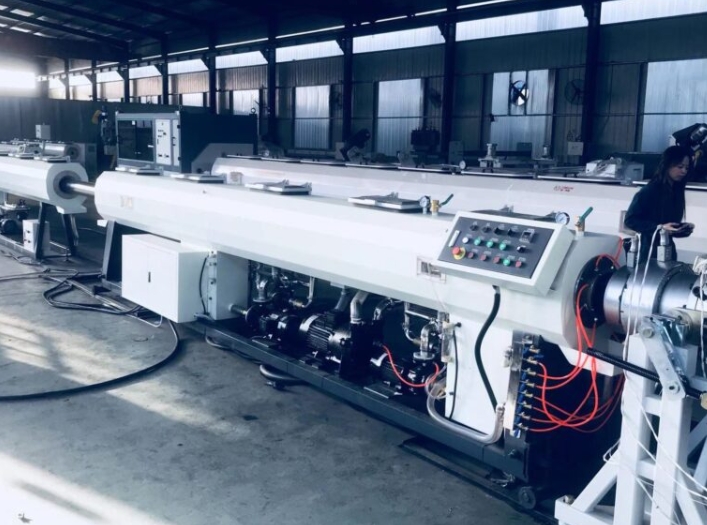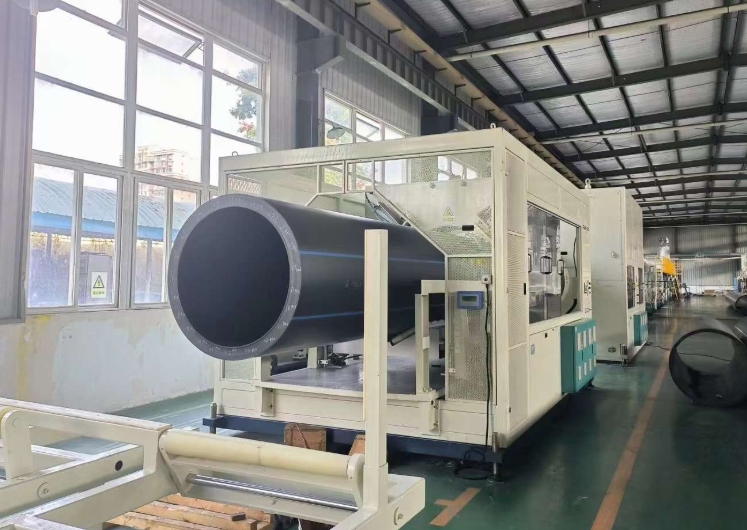Content Menu
● Introduction to Glass Extrusion Equipment
● The Glass Extrusion Process: Step by Step
>> 1. Material Preparation
>> 2. Feeding and Melting
>> 3. Mixing and Homogenization
>> 4. Shaping through the Die
>> 5. Cooling and Solidification
>> 6. Cutting and Finishing
● Key Features of Advanced Glass Extrusion Equipment
● Technological Innovations Driving Quality
● Benefits of Glass Extrusion Equipment for Production Quality
● Industry Applications and Case Studies
>> Case Study:
● Challenges and Solutions in Glass Extrusion
● Future Trends in Glass Extrusion Technology
● Conclusion
● FAQ
>> 1. What are the main advantages of using glass extrusion equipment over traditional glass forming methods?
>> 2. How does real-time monitoring improve production quality in glass extrusion?
>> 3. What role does automation play in modern glass extrusion equipment?
>> 4. How does glass extrusion equipment handle the challenges of fiber-reinforced composites?
>> 5. Can glass extrusion equipment be customized for specific applications?
● Citations:
Glass extrusion equipment stands at the forefront of advanced manufacturing, enabling industries to produce high-quality, consistent, and innovative glass-based products. From automotive components to architectural features and consumer goods, the demand for precision and reliability in glass production has never been higher. This article explores how glass extrusion equipment enhances production quality, delving into the technological advancements, process optimizations, and operational benefits that set modern extrusion apart.

Introduction to Glass Extrusion Equipment
Glass extrusion equipment refers to specialized machinery designed to shape molten glass or glass composites into continuous profiles or complex shapes. Unlike traditional glass forming methods, extrusion allows for precise control over dimensions, uniformity, and material properties, making it ideal for high-performance applications.
Modern glass extrusion equipment is engineered to handle a variety of glass types, including fiber-reinforced composites and specialty alloys, adapting to the unique requirements of each industry[1][2]. The integration of advanced control systems, automation, and innovative die designs has transformed extrusion into a highly efficient and quality-driven process.
The Glass Extrusion Process: Step by Step
Understanding the glass extrusion process is key to appreciating how equipment improvements translate into better product quality. Here's a step-by-step overview:
1. Material Preparation
Raw glass materials, often in the form of pellets, powders, or fibers, are prepared and sometimes pre-mixed with additives or reinforcements such as glass fibers for enhanced properties[1][2][6].
2. Feeding and Melting
Materials are fed into the extruder, where they are heated to a molten or semi-molten state. The precise temperature control ensures optimal viscosity and prevents degradation[1][2][5].
3. Mixing and Homogenization
Inside the extruder, rotating screws mix the glass and additives thoroughly. This step is crucial for achieving uniform material properties and avoiding defects caused by poor dispersion[1][2].
4. Shaping through the Die
The homogeneous molten glass is forced through a specially designed die, giving the product its final cross-sectional shape. Advanced die technology ensures dimensional accuracy and smooth surfaces[1][6].
5. Cooling and Solidification
The extruded glass profile passes through cooling systems, which solidify the material without introducing internal stresses or warping[1][6].
6. Cutting and Finishing
The continuous profile is cut to length and may undergo additional finishing operations, such as surface treatments or the application of coatings[6].
Key Features of Advanced Glass Extrusion Equipment
Modern glass extrusion equipment incorporates several features that directly contribute to improved production quality:
- Robust Screw and Barrel Design: Engineered to handle abrasive glass fibers and maintain consistent mixing, reducing wear and ensuring long-term precision[1][2].
- Optimized Temperature Zones: Multiple heating and cooling zones enable precise control over material properties throughout the process[1][2][5].
- Efficient Degassing Systems: Remove trapped air and volatiles, minimizing defects like bubbles or inclusions in the final product[1].
- Precision Dies: Custom-designed dies provide tight tolerances and smooth finishes, essential for high-quality extrusions[1][6].
- Advanced Control Systems (PLCs): Real-time monitoring and process control ensure consistency, reduce errors, and enable rapid adjustments to maintain quality[2][5].
- Automated Material Handling: Reduces human error, increases throughput, and maintains uniformity across large production runs[6].
Technological Innovations Driving Quality
Recent innovations in glass extrusion equipment have redefined what is possible in terms of product quality and process efficiency:
- Co-Extrusion Technology: Allows simultaneous extrusion of multiple materials, creating complex profiles with tailored properties (e.g., combining hard and soft layers for seal strips)[6].
- Smart In-Line Monitoring: Real-time inspection systems detect defects, color variations, and dimensional inconsistencies as products are made, enabling immediate corrections and reducing waste[3].
- Energy-Efficient Designs: Modern extruders consume less energy while maintaining high output, supporting both cost savings and sustainability[6].
- Wear-Resistant Components: Use of hardened steel or specialized coatings extends equipment life, maintaining quality over longer production cycles[2].
- Customizable Software: Advanced programming enables rapid changeovers and fine-tuning for bespoke product requirements[5][6].

Benefits of Glass Extrusion Equipment for Production Quality
The adoption of advanced glass extrusion equipment brings a host of benefits that directly impact production quality:
- Enhanced Mechanical Properties: Uniform mixing and fiber dispersion result in products with superior strength, rigidity, and impact resistance[1][2].
- Dimensional Stability: Tight process controls ensure that extruded profiles meet exact specifications, reducing variability and rework[1][2][5].
- Surface Quality: Precision dies and controlled cooling produce smooth, defect-free surfaces, essential for both functional and aesthetic applications[1][6].
- Reduced Defects: Efficient degassing and real-time monitoring minimize inclusions, bubbles, and other common defects[1][3].
- Cost Efficiency: Lower material waste, reduced energy consumption, and minimal downtime translate into lower production costs while maintaining high quality[2][6].
- Customization: Equipment flexibility allows for rapid adaptation to new product designs or customer requirements, supporting innovation and responsiveness[5][6].
- Sustainability: Optimized material usage and energy efficiency support environmentally responsible manufacturing practices[6].
Industry Applications and Case Studies
Glass extrusion equipment is central to a wide range of industries, each benefiting from its quality-enhancing capabilities:
- Automotive: Production of lightweight, high-strength components such as bumpers, dashboards, and under-the-hood parts[1][2].
- Construction: Manufacture of structural profiles, window frames, and seal strips with excellent weather resistance and durability[1][6].
- Consumer Goods: Creation of robust, aesthetically pleasing products like appliance housings and furniture[2].
- Electronics: Fabrication of precision components requiring tight tolerances and reliable performance[1].
- Industrial Equipment: Production of pipes, tanks, and storage containers with enhanced chemical and impact resistance[2].
Case Study:
A leading automotive supplier implemented a high-torque twin-screw extruder for glass-fiber-reinforced polypropylene (GFPP) components. The result was a 20% increase in tensile strength and a 15% reduction in production costs, attributed to improved fiber dispersion and real-time process control[2].
Challenges and Solutions in Glass Extrusion
Despite its advantages, glass extrusion presents certain challenges that must be addressed to maintain high production quality:
- Fiber Breakage: Excessive shear can damage reinforcing fibers, reducing mechanical performance. Solution: Use low-shear screw designs and optimized processing speeds[2].
- Abrasive Wear: Glass fibers can erode screws and barrels. Solution: Employ wear-resistant materials and schedule regular maintenance[2].
- Temperature Sensitivity: Precise control is needed to prevent degradation or poor adhesion. Solution: Multi-zone heating and efficient cooling systems[2][5].
- Moisture Management: Moisture in glass fibers can cause defects. Solution: Pre-dry materials and use vented extruders[2].
- Process Variability: Manual adjustments can introduce inconsistencies. Solution: Automate with PLCs and smart monitoring systems for real-time control[3][5].
Future Trends in Glass Extrusion Technology
The future of glass extrusion equipment is marked by continued innovation and integration of digital technologies:
- Industry 4.0 Integration: Widespread adoption of IoT-enabled sensors and data analytics for predictive maintenance and process optimization[3].
- Greater Automation: Fully automated lines with minimal human intervention, further reducing errors and labor costs[6].
- Sustainable Manufacturing: Focus on recyclable materials, energy recovery systems, and closed-loop processes to minimize environmental impact[6].
- Advanced Materials: Development of new glass composites and hybrid materials for next-generation applications[1][2].
- Customization at Scale: Rapid prototyping and flexible manufacturing systems to meet diverse and evolving market demands[5][6].
Conclusion
Glass extrusion equipment has revolutionized the manufacturing landscape by delivering unparalleled improvements in production quality. Through advanced design, precise control, and real-time monitoring, modern extrusion lines produce glass products that meet the highest standards for strength, consistency, and performance. As technology continues to evolve, the capabilities of glass extrusion equipment will only expand, supporting innovation, cost efficiency, and sustainability across industries.

FAQ
1. What are the main advantages of using glass extrusion equipment over traditional glass forming methods?
Glass extrusion equipment offers superior dimensional control, higher production speeds, and the ability to produce complex profiles with consistent quality. It also reduces material waste and supports the integration of reinforcements like glass fibers for enhanced mechanical properties[1][2][5].
2. How does real-time monitoring improve production quality in glass extrusion?
Real-time monitoring systems detect defects, color variations, and dimensional inconsistencies as products are made. This enables immediate corrections, minimizes waste, and ensures that only products meeting quality standards proceed to finishing[3].
3. What role does automation play in modern glass extrusion equipment?
Automation reduces human error, increases throughput, and maintains uniformity across production runs. Automated systems can handle feeding, mixing, temperature control, and even quality inspection, leading to higher efficiency and lower labor costs[6].
4. How does glass extrusion equipment handle the challenges of fiber-reinforced composites?
Modern equipment uses low-shear screw designs, wear-resistant materials, and precise temperature controls to protect fiber integrity and ensure uniform dispersion. This results in composites with superior strength and durability[2].
5. Can glass extrusion equipment be customized for specific applications?
Yes, advanced extrusion equipment can be tailored with custom dies, programmable control systems, and flexible feeding mechanisms to meet unique product requirements across industries such as automotive, construction, and electronics[1][5][6].
Citations:
[1] https://www.cowellextrusion.com/a-comprehensive-guide-to-extruders-for-pa-with-glass-fiber/
[2] https://jieyatwinscrew.com/blog/extruder-for-pp-with-glass-fiber/
[3] https://www.spssolutions.nl/how-efficiently-runs-your-extrusion-line/?lang=en
[4] https://advancedtechnicalprod.com/industry-news-blog/achieving-heat-resistant-harmony-with-extrusion-glasses/
[5] https://jieyatwinscrew.com/blog/exploring-extrusion-equipment/
[6] https://www.jingdongsj.com/article/innovations-in-glass-door-seal-strip-extrusion.html
[7] https://www.sciencedirect.com/science/article/pii/S2405844024169447
[8] https://pearl-hifi.com/06_Lit_Archive/02_PEARL_Arch/Vol_16/Sec_53/Philips_Tech_Review/PTechReview-32-1971-096.pdf
[9] https://ceramics.onlinelibrary.wiley.com/doi/am-pdf/10.1111/ijag.13092
[10] https://www.macocorporation.com/blog/extruder-machine/
[11] http://www.advantek-engineering.com/Fiber-GlassExtruders.html
[12] https://www.sciencedirect.com/science/article/pii/S026412752300151X
[13] https://www.movacolor.com/knowledge/process/extrusion/what-is-extrusion-applications-process-steps/
[14] https://paulmurphyplastics.com/industry-news-blog/extrusion-process-working-types-application-advantages-and-disadvantages/
[15] https://www.cmsmachine.com/glass-sealing-extruders-and-robots/glass-sealing-extruder/
[16] https://www.sciencedirect.com/science/article/pii/S2666833521000095
[17] https://en.wikipedia.org/wiki/Extrusion
[18] https://www.jwellmachine.com/what-are-the-benefits-of-using-a-pvb-film-extrusion-line-to-produce-films/






















